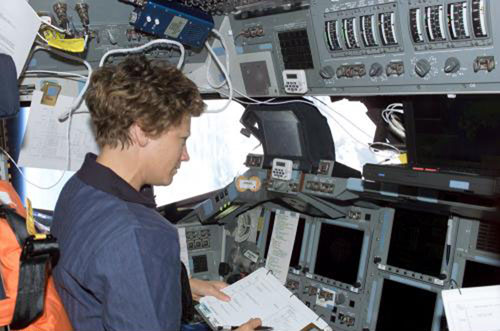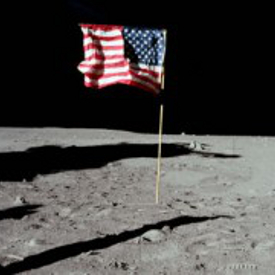
In 1978, NASA selected a class of thirty-five new astronaut candidates to support the upcoming series of Space Shuttle missions. Six of those thirty-five were women, Margaret Rhea Seddon, Kathryn Sullivan, Judy Resnick, Sally Ride, Anna Fisher, and Shannon Lucid – the first female American astronauts. All six later made it into orbit.
Since 1985, NASA has launched an additional forty-one women into space, most on the Space Shuttle, though six rode there on Russia’s Soyuz spacecraft. The most recent female space traveler, Astronaut Kathleen Rubins (launched to the International Space Station on July 6, 2016), was born in 1978, the same year the first six women astronauts were selected.
The majority of these forty-seven were assigned the crew position of Mission Specialist. This is a critical support responsibility that can involve a wide-ranging set of duties on every Space Shuttle and International Space Station mission. Mission Specialists focus on, among other things, scientific research, spacecraft operations, launching and retrieving orbiting payloads, and performing EVAs (spacewalks) to maintain or repair external spacecraft systems.
But in February of 1995, astronaut Eileen Collins broke through to another position formerly held exclusively by men: she was the first woman assigned to be Space Shuttle Pilot, one of the two crew positions (the other is Commander) responsible for actually flying the Space Shuttle for the entire flight from launch to landing.

Eileen Collins was exquisitely prepared for the task. In addition to her multiple bachelor and master degrees in science and math, she graduated from Air Force Pilot Training school, was a T-38 jet pilot and instructor, and was both commander and instructor pilot on C-141 cargo aircraft. Prior to her selection as an astronaut candidate in 1990, she had flown nearly 7000 hours in 30 different aircraft types.
Her credentials and experience were such that she was assigned Pilot of the Space Shuttle Discovery on her first spaceflight (STS-63), on February 3, 1995. She served as Shuttle Pilot again on her second spaceflight on May 15, 1997 (STS-84) this time on Atlantis, with a mission that included a rendezvous and docking with Russia’s Space Station Mir.

In July of 1999, Eileen Collins removed the final barrier to women’s spaceflight responsibilities. With the launch of Columbia on July 23, 1999 (STS-93), she became the first woman astronaut assigned as Commander of a Space Shuttle mission.
Collins’ final Shuttle launch on July 26, 2005 was a mission to the International Space Station. Once again she was the Commander, this time of Space Shuttle Discovery.
This flight, STS-114, was NASA’s first launch following the destruction during reentry of Space Shuttle Columbia on February 1, 2003. Discovery’s mission was to deliver an overdue and much needed resupply to the ISS, as well as to test the Shuttle’s safety improvements and revised procedures, including the ability to inspect and repair any potential damage to the Shuttle while it was still in orbit.

A component of that inspection involved a comprehensive examination of Discovery’s external surface by astronauts on the ISS. Because of that, Commander Collins became the first astronaut, male or female, to perform a full 360-degree pitch rotation maneuver of a Space Shuttle.

Eileen Collins retired from NASA in 2006, having pioneered the way for female astronauts to follow.
NASA astronauts Susan Still Kilrain and Pamela Ann Melroy have since served as Space Shuttle Pilots: Kilrain on STS-83 (April 4, 1997) and STS-94 (July 1, 1997); Melroy on STS-92 (October 11, 2000) and STS-112 (October 7, 2002).
Pamela Melroy also served as Space Shuttle Commander on STS-120 (October 23, 2007), the second, and last, female Shuttle Commander.
Since then, two women astronauts have served as Commander of the International Space Station: Peggy Whitson as Commander of Expedition 16 in October 2007, and Sunita Williams as commander of Expedition 33 in September 2012.
It’s taken more than 30 years, but women are finally moving into the command positions in space flight.
Copyright 2016 Dandelion Beach LLC Images: NASA











Recent Comments